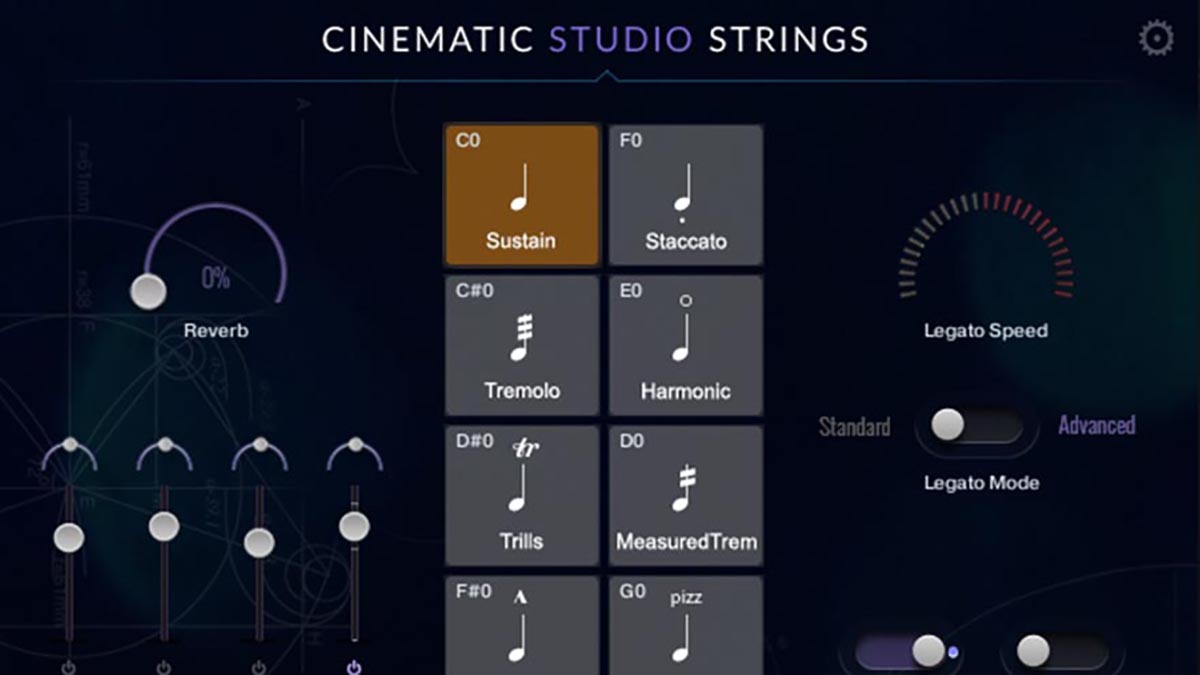MusicRadar Verdict
Peteris Vasks Strings is ideal for a number of production settings, from commercial, to classical or cinematic.
Pros
- +
Beautiful and extensive Chamber String library.
- +
The sonic character is both charming and appealing.
- +
Includes some very unique samples.
Cons
- -
Legato playing will require some practice.
MusicRadar's got your back
Orchestral Tools Peteris Vasks Strings: What is it?
The string section is commonly the largest of the orchestral units; you need that many players to balance with the wind, brass and percussion, but sometimes string scoring requires smaller forces, for a more intimate performance.
That’s where OT enters the frame, with a new package inspired by composer Peteris Vasks, and specifically his chamber string work, which is ironically titled ‘Voices’.
Vasks Strings is a deeply sampled chamber strings library, offering all of the usual articulations, with a host of more unusual ‘gesture’ articulations, providing some new and enticing colours for the string palette.

Orchestral Tools Peteris Vasks Strings: Performance and verdict
Let’s deal with the forces first. The main library is sampled from six first violins, five second violins, four violas, four cello and three basses.

• Cinematic Studio Series Strings
Recorded in the drier acoustic of a sound-stage, this features one of the best legato patches around.
• Spitfire Audio Chamber Strings
This tasteful suite features the substantial acoustic of the Lyndhurst Hall at Air Studios.
The sample capture was performed by Sinfonietta Riga, who are an acclaimed Latvian performing ensemble. This is important, as players that work together regularly are more likely to yield a better performance, which will result in better ensemble work across the group.
Sample capture was undertaken in the beautiful surrounding of St John’s Church, also in Riga, with both close/spot miking and an Omni Tree arrangement. As a consequence, the overall capture may be beautifully blended, achieving the perfect balance between a close signal, and the church ambience. It’s perfect, for an ensemble of this kind. There is a healthy degree of purity in the sound, although things can get emotive and expressive, when they need to.
Performance control is limited to dynamic volume and channel expression, with the level of vibrato weaving in with the dynamic level. There is also patching, which provides less of an emotive feel, if required. It can sound quite traditional and baroque at times, while the dynamic volume can induce some stirring phrasing, on demand.
Want all the hottest music and gear news, reviews, deals, features and more, direct to your inbox? Sign up here.

Whispering legato
Within the main ensemble patches, there are considerable options across the board; staccato and marcato patching is accompanied by tremolo and trill patches, with harmonic, sustains, and tremolos, too.
There are also a couple of levels of sustained sampling, which also link with the legato patching. The initial Sustain + Legato patch demonstrates the strength of legato and purity of sound. There is however an elephant in the room, and it will be no surprise to anyone versed with legato performance. The degree of latency in the legato patching is considerable. According to Orchestral Tools, this was by design, as it was felt that the legato was improved, by way of an overall construct. This leads to the inevitable pre-delaying of string lines, within the DAW, in order to achieve performance synchronisation. The overall effects are impressive, but tracking parts with this level of delay does present something of a challenge.
Even smaller forces
Alongside the ensemble patching, each first chair is also sampled as a solo. These samples sound genuinely sublime, and they arguably bolster the appeal of the library, by providing elements which could easily make up a string quartet or quintet.
Both the Ensemble and the First Chair sections provide some very unique patches, which reside under the guise of Gestures. Here you will locate various glissandos and runs, along with some unique and interesting effect-style playing, sounding reminiscent of Ligetti.
Finale and encore
In putting Vasks Strings through its paces, we were particularly impressed with the purity of the overall sonics. Depending on playing and production, we did find that a visit to the Mixer page, within the Sine player, was worthwhile; adjusting the blend between the close microphones and the tree sharpened the legato patches in particular. It sounds incredibly convincing, and thanks to its sharpness in tone, works beautifully in a number of orchestral and commercial settings.
MusicRadar verdict: Peteris Vasks Strings is ideal for a number of production settings, from commercial, to classical or cinematic.
Orchestral Tools Peteris Vasks Strings: The web says
"There is just so much to celebrate here – from a beautiful warm tone and large number of standard and special articulations to the inclusion of both ensemble and solo instruments, it’s hard to give this library anything but effusive praise."
Sample Library Review
Orchestral Tools Peteris Vasks Strings: Hands-on demos
Orchestral Tools
Sample Library Review
Christopher Siu
Alex Pfeffer
Orchestral Tools Peteris Vasks Strings: Specifications
- Works with Orchestral Tools’ SINE Player – very latest version required.
- macOS 10.13 or higher | Intel Core i5 or similar | Apple M1 chipset supported | At least 8GB RAM (16GB+ recommended).
- Windows 10 | Intel Core i5 or similar | At least 8GB RAM (16GB+ recommended).
- Standalone, VST, VST3, AU, AAX.
- 234GB of samples (96.7GB SINEarc compressed).
- 24-bit / 48KHz patches.
- CONTACT: Orchestral Tools
